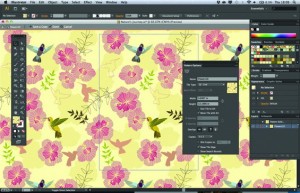Grab Only the Color
 By default the Eyedropper tool picks up "everything": fill and stroke color, stroke attributes, transparency, etc. (These options are set by double-clicking on the eye-dropper tool in the Toolbox.) To pick up only the color – without changing the default settings – hold down the Shift key and click with the Eyedropper on an object that has the color you need.
By default the Eyedropper tool picks up "everything": fill and stroke color, stroke attributes, transparency, etc. (These options are set by double-clicking on the eye-dropper tool in the Toolbox.) To pick up only the color – without changing the default settings – hold down the Shift key and click with the Eyedropper on an object that has the color you need.
When you attempt to click on an anchor point with the Covert Anchor Point tool and "miss," you get a very "helpful" warning dialog that tells you to click on an anchor point. Duh, thanks! To banish the warning dialog, check the Don’t Show Again checkbox, and consider using Smart Guides (Command-U) to help ensure that you’re clicking on another point.
Odd Numbers
You may find that you enter a value in the Transform palette and, after pressing enter, you get an odd value. For example, you type in 3 for the Width, but after you press return, it says 3.01. One factor that can cause this is a function called Snap to Point. Turn this off in the View menu, and you should now get the exact value you enter.
Slightly Lighter, Somewhat Darker
If you have created a color using CMYK or RGB sliders in the Color palette and now you want a slightly lighter or darker version of that color, you can adjust all the sliders at the same time. Hold down the shift as you drag one slider and the other three sliders will move together, creating a lighter or darker shade of the color.
Drag and Drop
Instead of copying and pasting from one document to another, just drag-and-drop. Select an object and use either selection tool to drag the selection tool to drag the object to a second open document. There’s only one catch: If you drag from a document with objects on multiple layers, in the other document all objects will end up on one layer.


No comments
Be the first one to leave a comment.